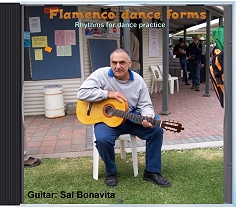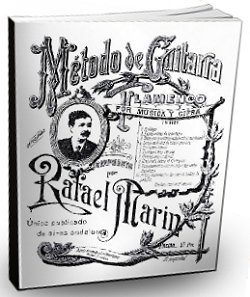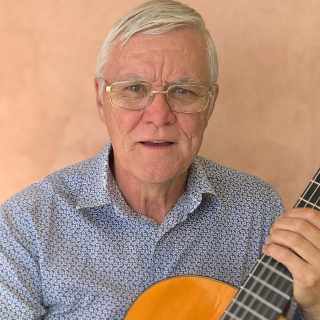Flamenco has been defined as "an expression of the human condition". I like that. Traditionally, each form has a unique emotional atmosphere connected with it. The best way to experience this is to listen to traditional style singing recordings. You can really feel the agony and the ecstasy expressed in these songs. If a song moves you internally to feel specific emotions, the singer has done his or her job.
The tempos shown here are meant only as a general guide. In
reality (whatever that is) most forms can vary greatly in
speed as the performance progresses. Garrotín and Farruca
and Zapateado for example, have alternate fast and slow
passages. Soleares and Alegrías are two forms with sections
which can gradually build up tempo. We're speaking
traditionally of course. With modern flamenco however,
almost anything goes. I'm referring to stretching the
boundaries of traditional flamenco forms, not the Ottmar
Liebert's brand of totally unrelated 'New Flamenco'.
Stretching boundaries is fair enough. After all, flamenco
is an evolving art form and new ideas and fusion concepts
are all part of the mix. Did I mention rules? Basically
there are none, not for style anyway.
Speed freaks
Back in the fifties and sixties, flamenco performance
seemed to follow a predictable formula which included a
healthy serving of showmanship. The exotic element was
exploited to the max. In addition, it seems every recording
from that era tried to outdo the rest with speed. They
played very, very fast in those days and tremolo was
included wherever possible.
Showmanship - Where's the
compás?
Anyway, the only rules which are considered sacred relate
to compás timing. Even so, compás tends to get a little
hazy with some of the flashy recordings of Manitas de
Plata, Carlos Montoya and even Sabicas. I know that may
sound sacrilegious to Sabicas devotees, but please spare me
your emails telling me what a misguided, bad person I am. I
said some recordings by these artists, not all. When I
first started to accompany dancers and was beginning to
understand compás, I had a good listen to some of these old
records again. All I'm saying is that I had a hell of a
time trying to count out Sabicas pieces. I said to myself,
"this guy is supposed to be a
master, so where is the compás definition and accented
beats? I can't hear it". It was sort of there,
but with all the slowing down and speeding up it is almost
impossible to pick at times.
Whatever turns you
on
With genuine flamenco groups, when was the last time you
saw a performance of Soleares that reminded you of
loneliness and introspection? If you like a little anarchy
in your lifestyle, flamenco could be just what you've been
looking for.
|
BEATS PER MINUTE |
MOOD |
|||||
|
230 |
Bulerias |
Festive, mockery, playing the fool |
||||
|
220 |
||||||
|
Chuflas |
Festive, fun, spontaneous |
|||||
|
210 |
||||||
|
200 |
Rumba |
Festive, playful, seductive, Cuban flavor |
||||
|
Zambra |
Festive, fun |
|||||
|
190 |
||||||
|
180 |
Guajiras |
Cheeky, seductive, Cuban flavor |
||||
|
Alegrías |
Happiness, merriment, celebration |
|||||
|
170 |
||||||
|
Colombianas |
Enjoyment, celebration |
|||||
|
160 |
Sevillanas |
Festive, traditional folk dance |
||||
|
Fandangos de Huelva |
Festive, traditional folk dance |
|||||
|
150 |
Tarantos |
Darkness, tragedy, deprivation, sorrow |
||||
|
Zapateado |
Flamboyance, showmanship, cleverness |
|||||
|
140 |
Verdiales |
Festive, traditional folk dance |
||||
|
Malagueñas |
Festive, lighthearted |
|||||
|
130 |
Tangos |
Festive, lively |
||||
|
Garrotín |
Sensuous, cheeky, happy |
|||||
|
120 |
Siguiriyas |
Mournful, desolute, a sense of loss |
||||
|
Soleares |
Lonliness, longing, introspecrion |
|||||
|
110 |
Farruca |
Dramatic, macho, disciplined, strutting |
||||
|
100 |
||||||
|
Peteneras |
Sadness, grieving, funeral like |
|||||
|
90 |
||||||
|
80 |
Tientos |
Serious, stately, majestic, sensual |
||||





